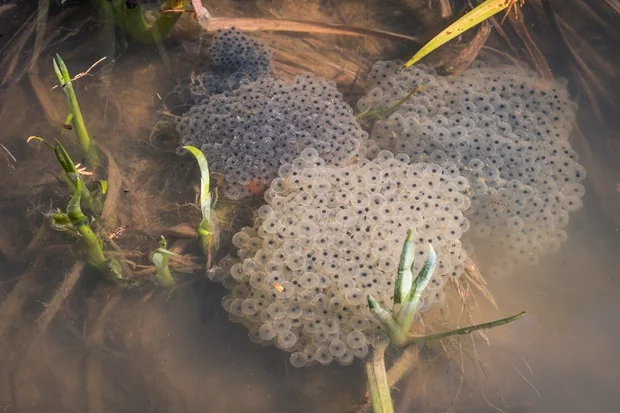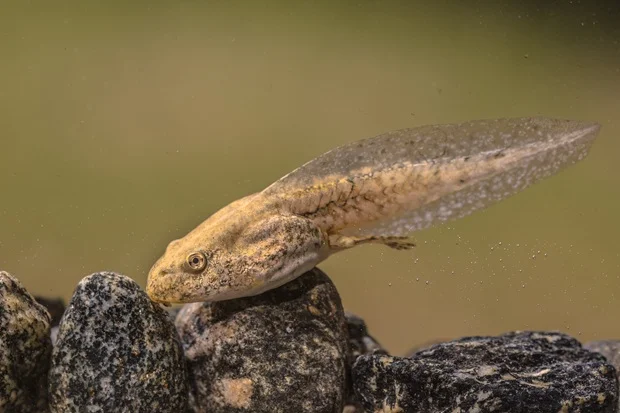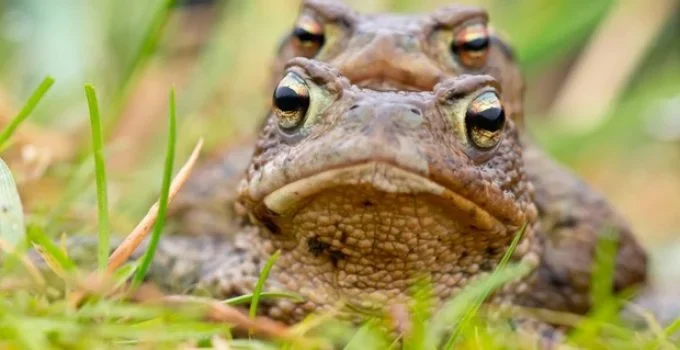How Do Frogs Reproduce?
Frogs reproduce through external fertilization, where the male clasps the female in a position called amplexus and fertilizes her eggs as she lays them. Most frog species lay their eggs in water, and the young hatch into free-swimming tadpoles before undergoing metamorphosis into adult frogs. But that’s just the beginning of a complex and fascinating reproductive process that varies widely across species.
Dive Deeper
- Amplexus: The Frogs’ Mating Embrace
- Where Do Frogs Lay Their Eggs?
- From Eggs to Tadpoles: The Frog Life Cycle
- Unusual Frog Reproduction Strategies
- Do Frogs Care for Their Young?
- 🎯 Final Thoughts
- 📚 References
🤝 Amplexus: The Frogs’ Mating Embrace
The key reproductive behavior in frogs is amplexus, where the male climbs onto the female’s back and holds her tightly—usually with his forelimbs just behind her front legs.
- This position triggers egg-laying in the female
- The male releases sperm over the eggs as they emerge
- Amplexus can last for hours or even days, depending on the species
📊 Interesting Fact: Some species, like the túngara frog, produce mating calls to attract females, while others engage in silent physical courtship [1].
Where Do Frogs Lay Their Eggs?

Frog eggs are typically laid in clusters, strings, or films in moist environments. Common egg-laying sites include:
- Ponds, lakes, and still water bodies
- Temporary pools or vernal ponds
- Leaf axils or tree holes in tropical frogs
- Foam nests constructed on water or vegetation
| Habitat Type | Example Frog Species | Egg Adaptation |
|---|---|---|
| Still water | American bullfrog | Gelatinous egg masses |
| Tree canopy pools | Red-eyed tree frog | Sticky egg clusters on leaves |
| Underground | Darwin’s frog | Internal or vocal sac development |
From Eggs to Tadpoles: The Frog Life Cycle

The frog’s life cycle includes dramatic metamorphosis:
- Eggs hatch into aquatic larvae (tadpoles)
- Tadpoles grow gills, a tail, and no legs
- They develop hind legs, then front legs, absorb their tail
- Lungs form and they transition to air-breathing juveniles
This transformation usually takes 6–12 weeks, but varies by species and environmental conditions.
📊 Tadpole survival rates are low—as few as 1 in 1,000 eggs may reach adulthood due to predation and environmental hazards [2].
🧬 Unusual Frog Reproduction Strategies
While most frogs rely on external fertilization in water, some species break the rules:
- Darwin’s frog males carry developing tadpoles in their vocal sacs
- Gastric-brooding frogs (now extinct) incubated eggs inside the stomach
- Marsupial frogs hold eggs in skin pouches on their backs
- African frogs in dry regions lay eggs underground in moist chambers
These adaptations evolved to increase offspring survival in challenging environments.
Do Frogs Care for Their Young?
Most frogs do not provide parental care, but some species are surprisingly attentive:
- Poison dart frogs carry tadpoles one by one to water-holding plants
- Male midwife toads wrap fertilized eggs around their hind legs until hatching
- Assa darlingtoni males shelter offspring in body pouches
| Species | Parental Role | Type of Care |
|---|---|---|
| Strawberry dart frog | Female | Transports tadpoles to pools |
| Darwin’s frog | Male | Vocal sac incubation |
| Midwife toad | Male | Leg wrapping and guarding |
📊 Only about 10% of frog species exhibit some form of parental care [3].
🎯 Final Thoughts
So, how do frogs reproduce? Most follow a familiar path: external fertilization in water, egg laying, and a tadpole stage before metamorphosis. But frog reproduction is also a story of remarkable variation, from tree frogs and foam nests to vocal sac and stomach-based parenting. Their diversity of reproductive strategies is a testament to amphibian adaptability and evolutionary success.
📚 References
- Ryan, M. J. (1985). The Túngara Frog: A Study in Sexual Selection and Communication. University of Chicago Press.
- Wells, K. D. (2007). The Ecology and Behavior of Amphibians. University of Chicago Press.
- Crump, M. L. (2015). Anuran reproductive modes: evolving perspectives. Journal of Herpetology, Link.
